
BULLETIN April 2024 / Vol. 114 No. 04 Allegheny County Medical Society
Opinion Society News
Editorial
• Eclipse
Deval (Reshma) Paranjpe, MD, MBA, FACS
Editorial
• The Older I Get, The Smarter THEY Get
Anthony L. Kovatch, MD
Opinion
• PAAR
Kate Janicki and Melissa Moore
Foundation News
• Strong Women, Strong Girls and Light of Life Rescue Mission
ACMS News
• How Another ACMS Did It First
Steven Reames
ACMS News
• How ACMS Will Carry the Torch
Melanie Mayer
ACMS News
• ACMS Honors Photos
ACMS News
• Top Physicians Under 40
ACMS News
• ACMS Celebrates Doctors' Day 2024
Sara C. Hussey
ACMS News
• Specialty Group Updates
ACMS Staff: Nadine Popovich, Eileen Taylor, and Melanie Mayer
Articles
Article
• PBGH Contributions and HPV Provider Action Brief
Harshitha Ramanan
Materia Medica
• Sparsentan (FilspariTM)
Alexa Wardoclip, PharmD; Madison Abbs, PharmD, BCPS

2 www.acms.org
2024 / Vol. 114 No. 04
County Medical Society
BULLETIN April
Allegheny
Cover Photo by Kirsten Lin, MD Kirsten Lin, MD specializes in Family Medicine Avalanche Lake, Glacier National Park, Montana
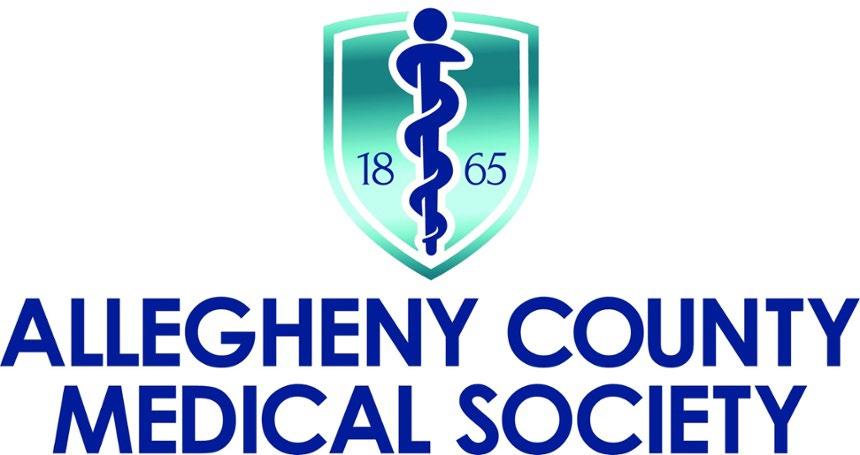
2024
Executive Committee and Board of Directors
President
Raymond E. Pontzer, MD
President-elect
Keith T. Kanel, MD
Secretary
Kirsten D. Lin, MD
Treasurer
William F. Coppula, MD
Board Chair
Matthew B. Straka, MD
Directors
Term Expires 2024
Douglas F. Clough, MD
David J. Deitrick, DO
Jan B. Madison, MD
Raymond J. Pan, MD
G. Alan Yeasted, MD, FACP
Term Expires 2025
Anuradha Anand, MD
Amber Elway, DO
Mark A. Goodman, MD
Elizabeth Ungerman, MD, MS
Alexander Yu, MD
Term Expires 2026
Michael M. Aziz, MD, MPH, FACOG
Michael W. Best, MD
Richard B. Hoffmaster, MD
Micah A. Jacobs, MD, FIDSA
Jody Leonardo, MD
PAMED District Trustee
G. Alan Yeasted, MD, FACP
2024 Board Committees
Bylaws
Kirsten D. Lin, MD
Finance
William Coppula, MD
Nominating
Keith T. Kanel, MD
Women’s Committee
Anu Anand, MD & Tiffany DuMont, DO
Term Ending 2024
Richard Daffner, MD; Anthony Kovatch, MD; Andrea Witlin, DO, PhD
Term Ending 2025
Robert Howland, MD; John Williams, MD; Alexandra Johnston, DO; Charles Mount, MD
Administrative Staff
Executive Director
Sara Hussey shussey@acms.org
Vice President - Member and Association Services
Nadine M. Popovich npopovich@acms.org
Manager - Member and Association Services
Eileen Taylor etaylor@acms.org
Operations CoordinatorACMS & ACMS Foundation
Melanie Mayer mmayer@acms.org
Part-Time Controller
Elizabeth Yurkovich eyurkovich@acms.org
Bulletin Designer
Victoria Gricks victoria@thecorcorancollective.com
COPYRIGHT 2024: ALLEGHENY COUNTY MEDICAL SOCIETY POSTMASTER—Send address changes to: Bulletin of the Allegheny County Medical Society, 850 Ridge Avenue, Pittsburgh, PA 15212. ISSN: 0098-3772 EDITORIAL/ADVERTISING OFFICES: Bulletin of the Allegheny County Medical Society, 850 Ridge Avenue, Pittsburgh, PA 15212; (412) 321-5030; fax (412) 321-5323. USPS #072920. PUBLISHER: Allegheny County Medical Society at above address. The Bulletin of the Allegheny County Medical Society is presented as a report in accordance with ACMS Bylaws. The Bulletin of the Allegheny County Medical Society welcomes contributions from readers, physicians, medical students, members of allied professions, spouses, etc. Items may be letters, informal clinical reports, editorials, or articles. Contributions are received with the understanding that they are not under simultaneous consideration by another publication. Issued the third Saturday of each month. Deadline for submission of copy is the SECOND Monday preceding publication date. Periodical postage paid at Pittsburgh, PA. Bulletin of the Allegheny County Medical Society reserves the right to edit all reader contributions for brevity, clarity and length as well as to reject any subject material submitted. The opinions expressed in the Editorials and other opinion pieces are those of the writer and do not necessarily reflect the official policy of the Allegheny County Medical Society, the institution with which the author is affiliated, or the opinion of the Editorial Board. Advertisements do not imply sponsorship by or endorsement of the ACMS, except where noted. Publisher reserves the right to exclude any advertisement which in its opinion does not conform to the standards of the publication. The acceptance of advertising in this publication in no way constitutes approval or endorsement of products or services by the Allegheny County Medical Society of any company or its products. Annual subscriptions:
Advertising rates and information available by calling (412) 321-5030 or online at www.acms.org. Bulletin Managing Editor
C. Hussey, MBA, CAE ACMS Executive Director shussey@acms.org Medical Editor Deval (Reshma) Paranjpe, MD reshma_paranjpe@hotmail.com Bulletin Designer
victoria@thecorcorancollective.com
$60
Sara
Victoria Gricks
Improving Healthcare through Education, Service, and Physician Well-Being ACMS Bulletin / April 2024 3

Eclipse
By: Deval (Reshma) Paranjpe, MD, MBA, FACS
“97.9%. We won’t have a 100% eclipse in Pittsburgh, because we’re not in the path of totality.”
Those in the path of totality saw day turn to night with the sun completely obscured. For some it was a demonstration of science; for others it was a religious experience. Some cheered and clapped holding champagne; some, like our beloved local weatherman Scott Harbaugh, found himself brought to tears because he had the opportunity to share this once-in-a-lifetime experience with his young son.
Even if you didn’t look at the sun directly through eclipse glasses, or even indirectly through a colander or a pinhole apparatus, you realized that this event actually lived up to the hype.
The sunlight grew dim, and the illumination of the world grew eerily dusky. Yes, we’d been told it was going to happen, but would it actually? After all, we’d never seen this before.
And yet the bright sunlight slowly but surely faded to an indescribable hue; the bright blue sky desaturated to grey. The birdsong stilled. The wind calmed and picked up. Many swore they could feel a very strange energy in the air. Everyone who witnessed any amount of the eclipse is changed by what we saw and felt. We can tell generations to come about what we experienced this day and about what to expect when it happens in their lifetimes, for it surely won’t happen again here in our lifetime.
I was reminded of the Ray Bradbury story “All Summer in a Day”, which depicts a newly colonized Mars where it rains continuously every day of the year but one. The schoolchildren, who have
only known rain, have been told of the transformation that will occur but don’t really believe it, because they haven’t seen it with their own eyes.
So much of the information that we access is filtered through the viewpoints of others. This can be through conversations or via mass media—including social, internet, television, radio or old-fashioned print media. And yet the stories we hear of the world lack a sense of reality and truth to us precisely because they are filtered. All of these things are happening (or are they?), but they exist in a virtual world around us that we can shut off or log off when it suits us. The farther we are from the facts, the harder they are to believe; this is human nature.
You can watch the NASA eclipse live feed, but you could also convince yourself that it is AI generated. But if you yourself are in the path of totality when day turns into night as you watch the sun disappear into a sliver and then a corona….you cannot deny what you saw. “Revelation”/second coming/end of the world myths in many major religions all involve signs that will appear in the skies and events that will strike the natural world for good reason—this way no one can deny their existence.
What are the odds that an 4.8 earthquake would strike just outside of Manhattan? Slim, but if you felt the earth quake you can’t deny that it happened, or the possibility that it could happen again. What are the odds that a container ship would lose power and take out the Francis Scott Key Bridge in Baltimore in a matter of a few seconds? Slim but never zero. If you
saw the video, you’d believe. If you were in one of the lucky cars that were barred from advancing to the bridge once the Mayday signal was given, and if you saw and heard the bridge collapse, you couldn’t deny that it happened.
If you got COVID and are living with the sequelae—whether it be brain fog, pulmonary complications, stroke, MI, diabetes, or others—you can’t deny that COVID is far worse than a cold. Most of my patients who refused to believe that COVID was real did so on the grounds that nobody they knew had it. Until that changed. One man came back reporting that six of his neighbors had either died or had been taken seriously ill with COVID. He could no longer deny it, because he had experienced it—he saw the ambulances take them away.
You can cry “fake news!”-- until you live through it, and then it becomes real news. This applies to broader concepts like war and famine as much as it does to other current events. The old saying “Never judge a man until you’ve walked a mile in his shoes.” holds true more today than ever. If you are old enough (or watched enough reruns, like me), you may remember the Mork and Mindy episode where Mork the alien, frustrated with the KKK and unable to convince them of the error of their ways, finally turns all the attendees of a KKK meeting from white to black— which is revealed when they remove their hoods. The visceral shock on their faces is a confirmation that this was the exact lesson they needed—being forced to walk in the shoes of those they hate and see them as human in order to open their own hearts and minds.
Imagine if adherents of hard-line
4 www.acms.org Editorial
stances on every hot-button issue today were magically transformed a la Mork from Ork so that they were literally living in the skin of their adversaries? How much more would each understand the other and be able to work together? Imagine if women had to navigate the world as men and along with the benefits also face challenges specific to men that women had never even considered, and vice versa—if men had to experience daily sexism and double standards in every sphere of life? How much more understanding would we all be of each other in our daily lives? It is hard to be any sort of human; the more grace we give each other, the better for humanity.
Imagine now if the finance executives of major healthcare corporations and insurance companies spent a mandatory month early in their careers assigned to work on the floors or ICUs as nursing assistants, or had to shadow rounding teams and their residents? How much better would they understand the human side of medicine—and the impact that their cost-driven decisions make on the lives of vulnerable patients and the healthcare professionals who work hard to take care of them? I’d be in favor of a refresher week each year for every corporate healthcare executive. Let them see and feel the squish of bodily fluids and the anguish of patients in pain and fear like we do. Then let them decide which budgets to cut.
Imagine if physicians and nurses were to take a similar sabbatical from clinical duties and instead shadow the corporate executives making those cost driven decisions. How much better could we understand how the sausage is really made—and how decisions which are may not make sense on the ground are arrived upon in the upper echelons? How would that change the discussions on the floors and in the nurses’ break rooms? And how much could we all temper those cost-driven decisions based on what is best for the system and our patients based on our boots on the ground experience?
This is not a new concept—think Trading Places, Freaky Friday and Undercover Boss.
Hard choices and decision making would be improved for the best and highest good of the patients if each spent time in the other’s shoes. Most of all, each would see the other’s human struggles and grow closer with the knowledge.
On another note, the theme of the WHO’s World Health Day 2024 is My Health, My Right. According to their website “This year’s theme was chosen to champion the right of everyone, everywhere to have access to quality health services, education, and information, as well as safe drinking water, clean air, good nutrition,
quality housing, decent working and environmental conditions, and freedom from discrimination. “
When I think of this I think: what an admirable and lofty goal! Then my mind wanders back to a freshman course mandatory for premed students at Brown taught by the late Dr. Edward Beiser, called Hard Choices. The catchphrase of the class was: “Who Decides?” As in, who decides what constitutes safe drinking water? The devil is in the details.
Perhaps the better question is: How is it Decided? And perhaps a good answer to that is: by putting oneself in the vulnerable person’s shoes before making the decision.
Happy April, friends.

ACMS Bulletin / April 2024 5

The Older I Get, The Smarter THEY Get
By: Anthony L. Kovatch, MD
“My father was an amazing man. The older I got, the smarter he got.”
I starkly realized that the satirical claim of iconic American writer and raconteur Mark Twain about his father had become true of myself as a judge. Because of the dumbing down of my scientific acumen over the past 2 years in retirement, the complexity and “Einsteintivity” of the projects submitted to the Carnegie Science and Engineering Fair on April 3rd by high school students from Western Pennsylvania seemed not only more challenging than those of the middle school students I had analyzed last year, but even more superior to the high school submissions that had flabbergasted me in 2022. Had this whole generation become smarter in just 2 short years? Furthermore, this year the research and development of every undertaking was solely in the hands of each single investigator (rather than a united group of “buddies”), requiring an overwhelming degree of dedication, self-sacrifice, and investment in time and energy.
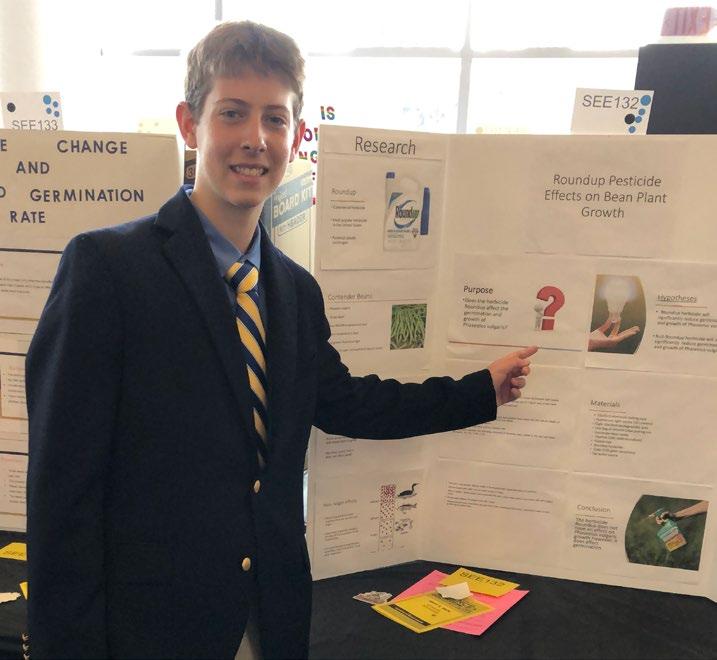
A few of the investigators were freshmen just launching their careers in pursuing the scientific method; others had devoted 3 or 4 years of their high school careers longitudinally accumulating the data that proved the hypotheses that had been kindled in their freshman year. The latter group could expound on their methods and defend their conclusions with the virtuosity of a seasoned politician reading from a teleprompter a speech prepared by a highly compensated spin doctor. I was struck by the diversity and professionalism of the students; many had travelled 2-3 hours in heavy rain and sleet starting in the wee hours of the morning to get to the Northside on time. I must shamefully admit that on several occasions I breathed a little sigh of relief when a no-show relieved the overwhelming strain on my critical analysis of the highly technical, statistical data.

As in previous years, the candidates focused their efforts on contemporary themes needing clarification: the effect of dark chocolate on Alzheimer’s disease; the value of probiotics; the
role of biofilms and the microbiome in human disease; various antibacterial and anti-fungal therapies (an offshoot from the COVID 19 pandemic); the pros and cons of artificial intelligence in the medical arena.
As a pediatrician, I found two particular projects worthy of special distinction. One study, highly relevant in this era of the increasing prevalence of mental health issues in adolescents and young adults, determined that major depressive disorder could be detected with 100% accuracy by screening the tears of individuals for 3 biomarker proteins. Another study examined the role of the nasal microbiome in asthma, comparing the diversity and abundance of certain pathogenic bacteria in the nasal brushings from 694 asthmatic versus healthy Puerto Rican children; noteworthy disparities in the quantity of certain species were found, especially of a relatively unexplored pathogen, called Staphylococcus pettenkoferi. I personally experienced some vindication in the policy of us pediatricians who are determined to treat early bacterial infections aggressively in children with acute exacerbations of their asthma. The authors of these two studies were actually friends at North Allegheny High School and were willing to pose for a joint picture.
I was astonished by the work ethic and dedication reported to me by the students. Many had sacrificed their summer vacations and extracurricular activities during the school year and had obviously burned midnight oil to consummate their projects. I suspect many are paving the way for a career
6 www.acms.org Editorial
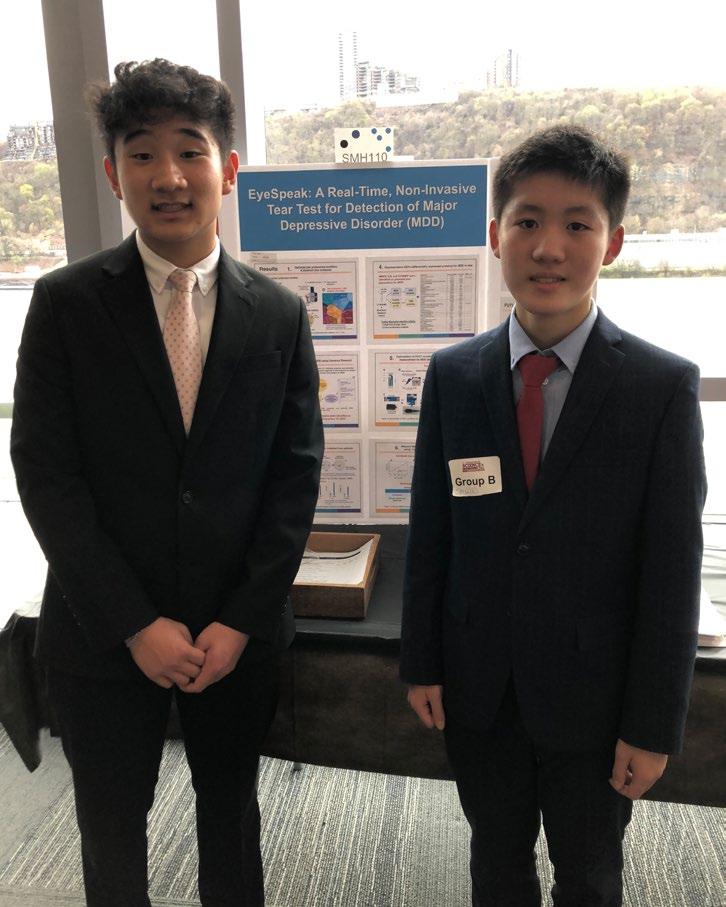
in medicine and membership in the ACMS; these enterprising individuals were already preparing themselves
school and residency! I reasoned that the dye had already been cast for these precocious scientists in their pursuit of the purposeful meaning of life we all hope to grasp. Despite the gradual diminution of my intellect due to the “rest and rust” of retirement, I felt more despair in the realization that I had, unlike the students, finally achieved my heart’s desire. I was haunted by the

paradoxical contention of controversial Irish playwright Oscar Wilde: “I feel sorry for those who never get their heart’s desire…but sorrier still for those who do.”
As I exited the Science Center with my brain and memory in “fast forward,” I paid homage (for acutely improving my intelligence) and offered the mentorship of the ACMS to a group of 5 students from Pittsburgh Science and Technology Academy who had packed up their elaborate displays and were cajoling each other while awaiting the bus ride back to the school. They were guarding their posters as parents would tenderly protect their babies. On my ride home, already missing the students of which I was so proud, I hummed the melancholic song popularized by Frank Sinatra:
“One for my baby, (and one more for
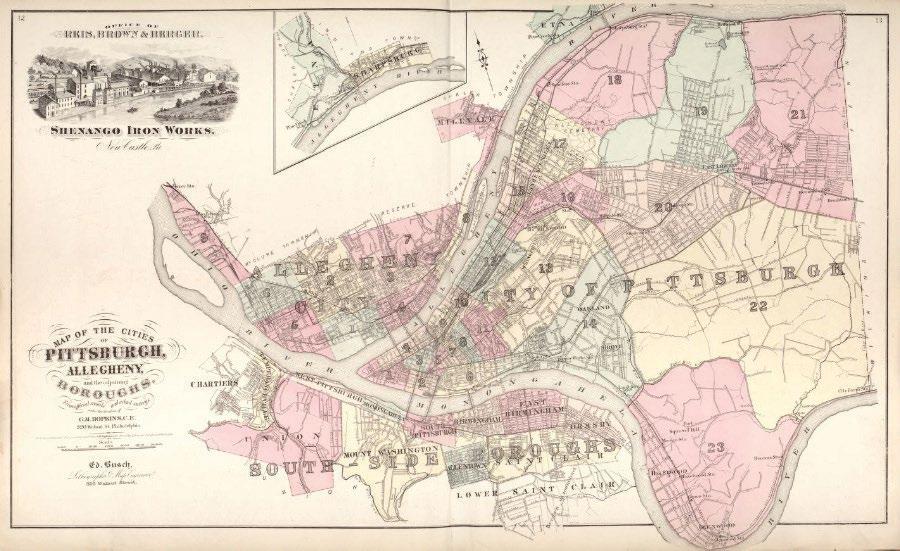













ACMS Bulletin / April 2024 7
Support Support Team Team Attention Attention Individual Individual Top ½% of all BHHS Agents • $50+ Million in 2023 Sales • 20+ Years of Experience • 800+ Satisfied Clients • JUST LISTED 225 E Waldheim - Fox Chapel $445,000 FORSALE 4406 Birchwood Ln - Hampton $620,000 JUST LISTED 205 Scarborough Dr - Indiana Twp $645,000 UNDER CONTRACT 5505 Woodmont - Squirrel Hill $775,000
Foundation Feature Strong Women, Strong Girls
By: Marissa Escajeda, MPA, MA
Strong Women, Strong Girls (SWSG) is a multigenerational mentorship organization that connects hundreds of girls with caring mentors. SWSG’s mission is to champion the aspirations and potential of girls from underresourced communities through innovative mentorship experiences grounded in the lessons of strong female role models.
Every week, we bring college mentors together with girls in grades 3-5 at over 40 program sites across Allegheny County. Using our unique skill-building curriculum, mentors and mentees explore the stories of strong women-identifying and nonbinary role models and engage in growth-fostering activities and discussions.
Our college women also build strong mentoring relationships with professional women, known as Strong Leaders. Through one-on-one matches and Group Mentoring events, college participants gain personal insight and real-world career guidance from a supportive community of women.
We believe in a cycle of mutual empowerment, connecting women and girls at different stages in their lives, so that they not only learn from, but grow with each other. Our mentoring community encourages our girls and young women to be the leaders and changemakers they dream to be.
SWSG helps girls in grades 3-5 from under-resourced communities in the Pittsburgh area. There are multiple needs that SWSG addresses through its intergenerational mentoring program, and it touches on each generation of girls and women impacted: preadolescent girls in elementary school;
young women mentors in college; and professional women in the community.
Starting with girls, who participate as mentees in SWSG--they are in crisis. The Girls’ Index, which has collected data from girls nationally for the past six years, also saw unsettling statistics across the board between their first data collection in 2017 and their most recent in 2023: Extreme sadness and depression tripled in 5th and 6th grade girls; overall rates of girls’ confidence has dropped from 68% to 55%; and 79% of girls reported that they are under so much pressure that they feel like they are going to “explode” (Ruling Our Experiences, 2023). By high school, 57% of girls are reporting experiencing “persistent feelings of sadness or hopelessness in the past year,” up from 36% in 2011 and nearly twice as high as boys (CDC, 2023).
We know that girls of color, in particular, as well as those with limited resources, face disproportionate challenges that exacerbate the troubling statistics noted above. This is why SWSG prioritizes girls in communities with a high percentage of Black, Indigenous, and People of Color (BIPOC) and high rates of poverty or low-income families where resources and access to programs like SWSG are often limited. Of the 488 girls served this past program year, more than half identified as girls of color (61%) and approximately 34% of participants lived in households with an annual income below $27,800 and 47% lived in single-parent households.
While mentees remain the primary beneficiary of SWSG, the agency also recognizes the needs of its two groups
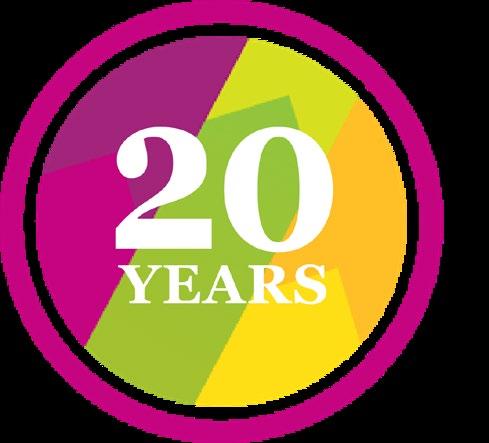
of mentors: young women between the ages of 18-22 enrolled in college and professional women in various stages of their careers. Even today, women continue to confront opportunity gaps that limit their achievement and their leadership, and this is evident in the gender pay gap and lower percentage of women in prominent roles compared to men. Less than 30% of corporate board members are women (Moody’s, 2022) and less than 5% are African-American women (ISS Corporate Solutions, 2021).
The experiences that girls receive through SWSG address needs that exist well into adulthood, needs such as learning experiences, shared spaces and connection, and opportunities to grow professionally and personally.
SWSG’s mentoring program combats these alarming statistics, providing a safe space for girls to build meaningful relationships with peers and positive female role models, while building skills and confidence. SWSG meaningfully contributes to the substantive improvement in the wellbeing of girls and women by building cognitive and leadership skills, and by bolstering self-regard, belief in the future, social connection, and social capital.
You can contribute to empowering the next generation of women and girls by volunteering with SWSG through mentoring, event volunteering, role modeling, professional development sessions, or simply staying informed and networking at Strong Leader events in Pittsburgh. Sign up on our website (www.swsg.org) to get involved!
8 www.acms.org Foundation News

Foundation Feature Light of Life Rescue Mission
By: Rev. Jerrel T. Gilliam - Executive Director at Light of Life
Light of Life stands as a lifeline to Pittsburgh’s homeless in the North Side, offering food, shelter and lifechanging services to those grappling with the complexities of homelessness. We know that there are many different things that lead to someone becoming homeless. To address different tributaries of homelessness such as mental health and addiction, we often partner with physicians for medical expertise.
Mental health often serves as a silent but powerful tributary to homelessness. The individuals who seek refuge at Light of Life often carry burdens invisible to the naked eye. Trauma, depression, and anxiety are just some of the issues that can lead someone down the path of homelessness.
Through compassionate care from our case managers and trained, on-site mental health specialists, we have a network of support for those struggling with their mental health to lean on. We also recognize the importance of a wellbalanced diet when it comes to mental and physical health, so we partner with organizations like ACMS to provide nutrition classes to our clients where they learn how to prepare healthy meals for themselves and their families.
Basic hygiene may seem like a trivial concern in the face of such monumental challenges, but for those experiencing homelessness, it can create serious health concerns when they are outside in the elements most of the day or let seemingly minor cuts go untreated. Lack of access to showers, clean clothes, and personal care items can increase someone’s risk of infection or disease. This is why
our Street Outreach Team distributes hygiene kits filled with personal care items during their camp rounds. Often, we have medical care personnel volunteer to go on camp rounds to help administer first aid.
Addiction, another major tributary of homelessness, can often be a great barrier to stability for someone on their recovery journey. Last year, there were 707 fatal overdoses in Allegheny County, 82% of which were from fentanyl. Many of those who have experienced trauma or suffer from mental health issues seek solace in drugs and alcohol. Our Mission provides tools for people to overcome their addiction and the support needed to rebuild their lives shattered from its grasp. Light of Life’s newest facility, Ridge Recovery Place, offers long-term programming for men, women and children to enter a journey of life recovery. Light of Life aims to create a safe environment where those facing homelessness or addiction can address their needs and explore the underlying issues that have contributed to their current circumstances. Our goal is to assist our clients in overcoming barriers that hinder their journey toward becoming healthy, independent members of the community, fulfilling their true potential.
The importance of physicians in addressing homelessness cannot be overstated. Their expertise, compassion, and commitment to healing are invaluable resources in the fight against this issue. By recognizing the tributaries that feed into homelessness and addressing them with empathy and understanding,
we can help pave the way for individuals to reclaim their lives.
If you are interested in learning more about how Light of Life serves Pittsburgh’s homeless and the different ways you can join us, visit www. lightoflife.org.
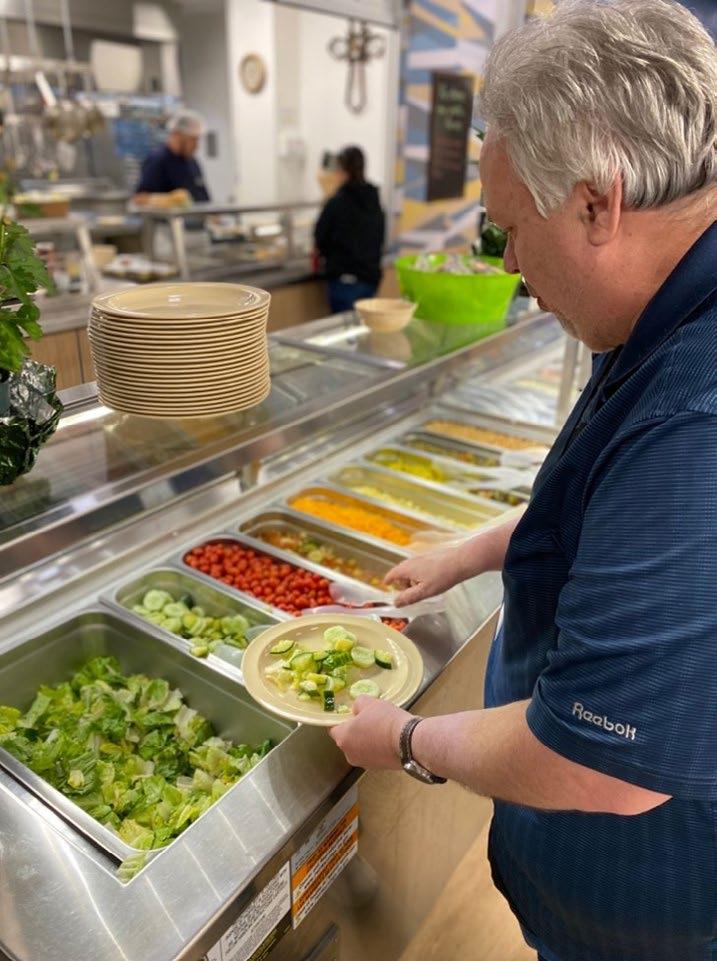
ACMS Bulletin / April 2024 9 Foundation News
Light of Life Rescue Mission clients and staff enjoying the health benefits of the salad bar during lunch at the Mission’s newest facility for long-term programming, Ridge Recovery Place. The salad bar, along with nutrition classes for clients, was made possible through a grant given by ACMS.
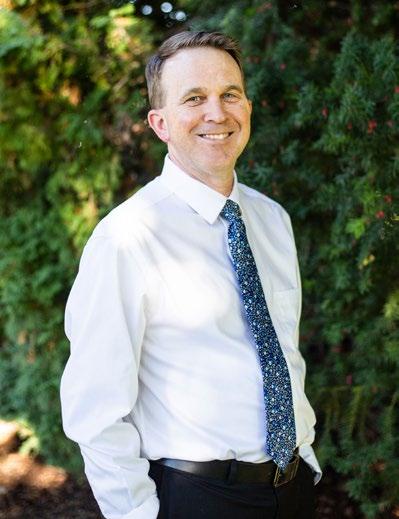
How Another ACMS Did It First
A Focus on Physician Wellness Connects County Medical Societies From Across the Country
By: Steven Reames – Executive Director of Ada County Medical Society in Boise, Idaho
In the spring of 2015, the board of directors of the Ada County Medical Society (adamedicalsociety.org) in Boise, Idaho held strategic planning meetings. I had only been on the job for a few months but emerged with new marching orders: start working on physician burnout. Although research on the pervasive challenge had just started gaining attention, we did not need statistics to paint a picture of local physicians: they were not turned on or tuning in but were burnt out and dropping out of medicine.
Soon, I learned about a solution that Lane County Medical Society in Eugene, Oregon had created. This small medical community had been rocked by four physician suicides over 18 months. Doctors came to the medical society in tears imploring the society to do something. The director, Candice Barr approached her board and said, “We are not going to do another physician suicide prevention event, which no physicians really want to attend.” They gave her free reign and resources to try something new.
In 2012, LCMS launched the nation’s first counseling and coaching program sponsored and hosted by a medical society. The Physician Wellness Program (PWP) was a member benefit that acted like an employer’s assistance program with strict confidentiality procedures in place. LCMS contracted with a part-time, experienced doctorallevel psychologist to provide a limited number of no-cost appointments.
PWP was developed by physicians and endorsed by the Oregon Medical Board. There was no insurance record or billing by name, and it was available
at hours convenient for physicians at the CMS office, with a private entrance. Participation was self-initiated, could not be mandatory, and was not subject to discovery or attestation disclosure.
At the American Association of Medical Society Executives (AAMSE) conference, Candi shared her expertise with other directors like me, covering budgets, policies, and marketing strategies. The Medical Society of Metropolitan Portland served as an example, as did Lexington. Lexington Medical Society chose to contract with a mental health provider group instead of creating instead of creating a dedicated in-office counseling space. We went a step farther by engaging multiple mental health providers.
We launched our Physician Vitality Program (physicianvitality.org) in late 2016 and it has been running strong ever since. It is available to all licensed members of our association as a benefit to those who pay for membership. To date, we have provided over 1400 appointments to our members to the tune of more than $180,000. We have funded this directly out of our regular dues income, with just 1/6th of that funded as charitable gifts via our Foundation. Over the past two years, we’ve contracted with our state medical association and a state specialty society to extend the program to their members.
Since then, it has been a privilege to promote the adoption of this program nationally through county and state medical societies, associations, and foundations. Working with a few other county society CEOs, we have secured two rounds of funding from
the Physicians Foundation to publish two editions of the LifeBridge PWP Toolkit (physicianwellnessprogram.org) and train membership associations on how to start a program. Since 2016, we have tracked the launch of some 30-35 similarly designed programs across the nation, all adapting to their local context and resources.
Your own ACMS Foundation was one of those funded in the latest grant opportunity and I have been working with ACMS Foundation Operations Coordinator Melanie Mayer since last fall to help get your program off the ground. As she introduces this program to the membership and region, I encourage you to promote and support the medical society staff, board, and committee in it.
Reducing mental health stigma among medical professionals is crucial. Leaders in any organization should set an example by testing the product first. Making your own appointment through PWP has the benefit that if you ever have the reason to recommend it to a colleague, sharing your own preventative approach and use of the program lowers the stigma for others.
Pittsburgh’s ACMS is one of just a couple of medical societies in the Northeast operating a program like this and I applaud you for it. Please take the lessons you learn along the way and pass them on to others in your circles of influence and your region.
For more information visit:
1. www.adamedicalsociety.org
2. www.physicianvitality.org
Society News
10 www.acms.org
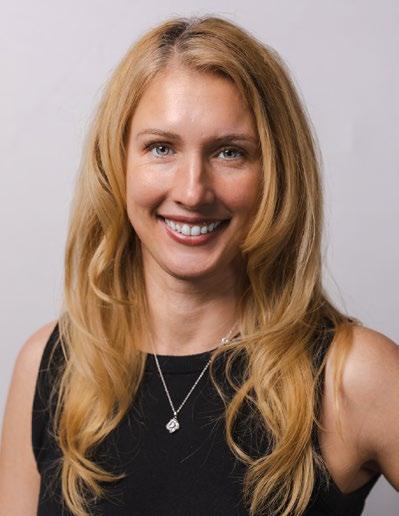
How ACMS Will Carry the Torch
Allegheny County Medical Society Launches Physician Wellness Pilot Program
By: Melanie Mayer – ACMS Foundation Operations Coordinator & Physician Wellness Program Project Lead

The Allegheny County Medical Society Foundation has recently launched a pilot program called the Physician Wellness Program (PWP) to address the critical issue of physician mental health. This initiative was unveiled at the ACMS Honors event on April 18, 2024, and represents a significant stride towards prioritizing the well-being of physicians across Allegheny County.
The PWP is led by Dr. Vint Blackburn, a pediatric psychiatrist and esteemed member of the ACMS, and aims to confront the pervasive challenges of physician burnout, depression, imposter syndrome, and perfectionism. Dr. Blackburn aptly notes that physicians often neglect their own mental and physical health while tirelessly attending to the needs of their patients. This reality is underscored by the alarming statistic revealing that 9 to 11 percent of U.S. doctors report experiencing suicidal thoughts.
The ACMS Foundation has spearheaded this initiative to provide mental health support to licensed physicians and residents within the county, which has been made possible through a generous grant from The Physicians Foundation, a national organization committed to supporting physician empowerment and enhancing patient care. The genesis of the program reflects the leadership of ACMS Executive Director, Sara Hussey,
who has made physician wellness a cornerstone of her tenure since 2022.
Recognizing the link between physician well-being and the delivery of quality patient care, the ACMS Foundation is committed to addressing the issues of burnout and mental distress among medical professionals in a meaningful way. Through the PWP, physicians and residents will have access to confidential therapy sessions facilitated by carefully vetted therapists via the ACMS website. Importantly, this program guarantees cost-free support for up to four sessions annually, ensuring that financial barriers do not hinder individuals from seeking the care they require.
The PWP fosters a safe environment wherein physicians and residents can prioritize their mental health without fear of adverse repercussions from their employers or regulatory bodies. Confidentiality remains paramount, with no notifications sent to employers and no involvement of insurance or employee assistance program (EAP) billing.
As the PWP enters its pilot phase, the ACMS Foundation looks ahead to the program's expansion and formal integration into its framework. To learn more about this remarkable initiative, please visit www.acms.org/ physicianwellness
"This program effectively removes barriers that prevent physicians from accessing the counseling they need. It's a great resource that can help improve the well-being of doctors in the community. It also serves as a catalyst to start a broader conversation around how we can better take care of one another. This is a platform to help reduce the stigma around seeking mental health services."
- Vint Blackburn, MD

ACMS Bulletin / April 2024 11 Society News
Vint Blackburn, MD announcing ACMS Physician Wellness at the 2024 ACMS Honors event
ACMS Honors
April 2024
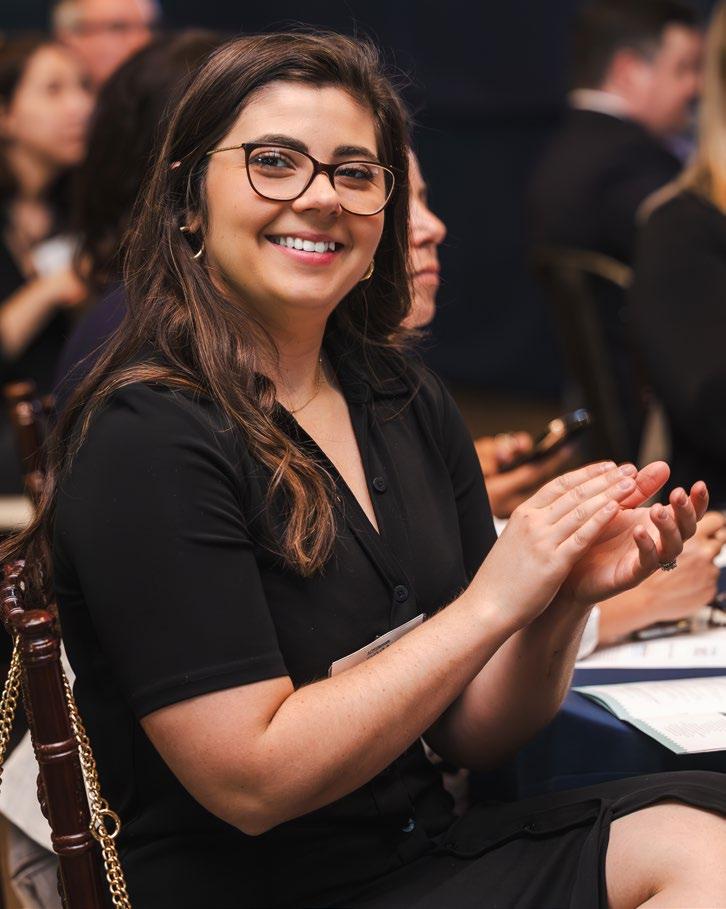
On Thursday, April 18th, ACMS members and members of the ACMS Foundation community gathered at the Heinz History Center for ACMS Honors: a Celebration of the ACMS Foundation and a chance to honor the PAMED Top Physicians Under 40 from Allegheny County. These photos are hot off the press, as this edition goes to print the morning after the event. But look forward to a full recap of the event in the May Bulletin.



12 www.acms.org Society News
Top Physicians
Congratulations to the 2024 PAMED Top Physicians Under 40 from Allegheny County. This year ACMS had 15 physicians represented. Several of these Physicians attended ACMS Honors on April 18 to receive their award from local leaders. Under 40
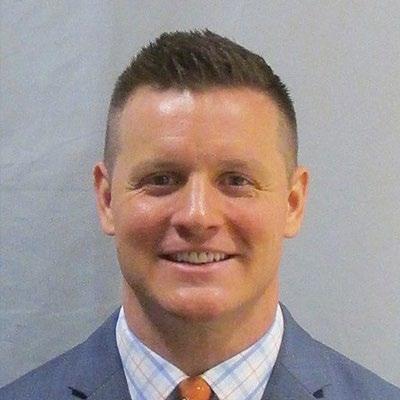


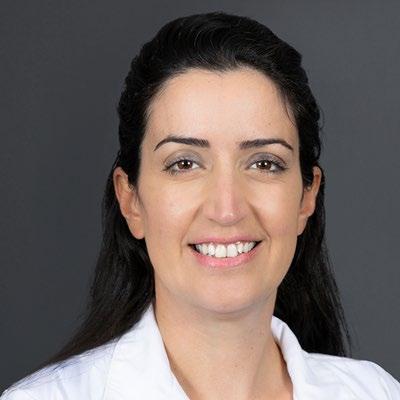

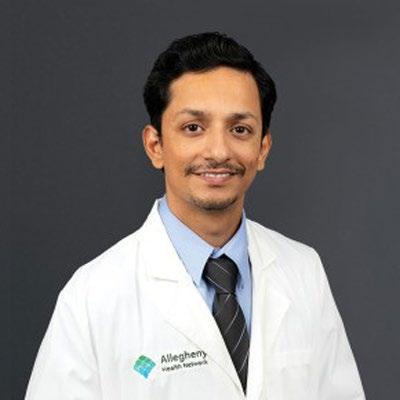

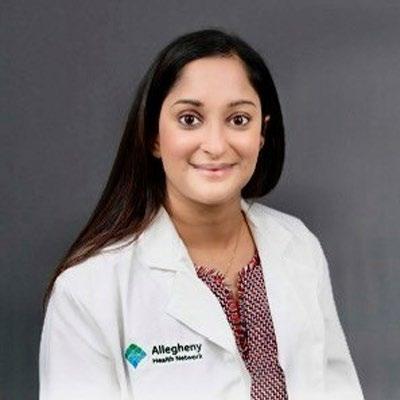
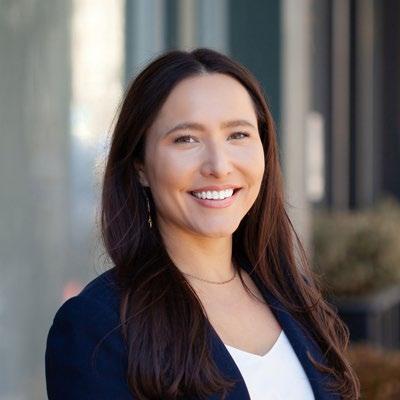
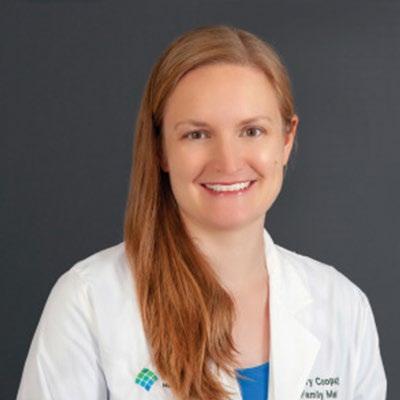

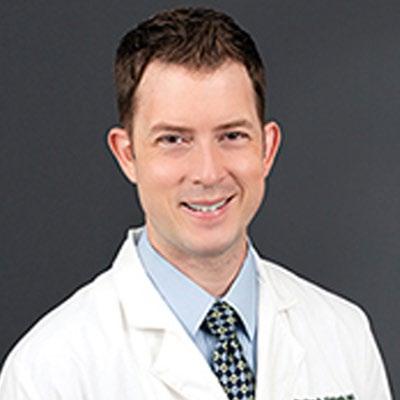


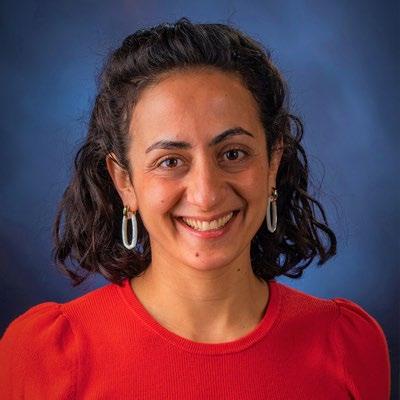

1. Blaise Abramovitz, DO, FASN UPMC
2. Rasha Abdulmassih, MD - AHN
3. Tanmayee Bichile, MD - AHN
4. Mary Glenn Cooper, MD - AHN
5. Grace Ferguson, MD - AHN
6. Molly Fisher, MD - AHN
7. Jay Idler, MD - AHN
8. Deeksha Jandhyala, MD - AHN
9. Alexandra Johnston, DO - AHN
10. Lena Makaroun, MD - University of Pittsburgh
11. Don Mathew, MD - UPMC
12. Karthikeyan Ranganathan, MD - AHN
13. Emily Scott, DO - Direct Care Physicians of PGH
14. Nathan Shively, MD - AHN
15. Tyler VanDyck, MD - AHN
ACMS Bulletin / April 2024 13 Society News
Photo of winners and PA State Representative Arvind Venkat taken by Tyler Newpol at the 2024 ACMS Honors event

PBGH Contributions and HPV Provider Action Brief
By: Harshitha Ramanan and Diane McClune
For the first time there is a vaccine that can prevent cancer. And the Pittsburgh Business Group on Health (PBGH) is thrilled to collaborate with healthcare professionals to increase vaccine rates. PBGH has taken significant steps to combat HPV by collaborating with employers, distributing educational materials, and partnering with healthcare professionals through a regional task force, the Prevention Task Force-HPV Initiative. This task force, formed in 2022, brings together prominent leaders from PBGH, including representatives from various small and large companies, nonprofits and local entities. These local entities meet quarterly to discuss collaborative efforts to increase HPV vaccination rates by targeting diverse age groups, leveraging employer and insurer involvement, and using multifaceted strategies to enhance accessibility and awareness.
Since the inception of this task force, this group has been involved in creating action briefs for employers, disseminating CDC educational materials, and educating healthcare professionals about the importance of HPV vaccination. PBGH is committed to promoting public health and preventing HPV-related diseases. In furtherance of current efforts, PBGH has designed a provider action brief outlining strategies to improve HPV vaccination rates, ensuring the continuation of the impactful work in the fight against HPVrelated diseases.
It is as follows:
PROVIDER ACTION BRIEF Monitoring Vaccination Rates
• Set up a system to regularly track the number of patients vaccinated and compare v over time to assess progress.
• Update patient records to reflect completed vaccination series.
Patient Follow-Up
• Establish protocols for following up with patients to ensure completion of the full vaccination series. E.g. Schedule appointment for second dose immediately after administering the first.
• Address any concerns or barriers patients may have towards completing the vaccination series. E.g. Consider the use of a pharmacy to complete the series.
Provider Education and Training
• Offer ongoing education and training sessions on the importance of HPV vaccination (including new guidelines, information and research).
• Provided vaccination conversation strategies education:
1. Personal Experience Sharing:
• Share personal experience of getting vaccinated against HPV, emphasizing the protection against HPVrelated diseases.
• Highlight any positive outcomes or experiences post-vaccination to instill confidence and trust.
2. Open Floor for Questions:
• Encourage patients to ask questions or express concerns about the vaccine, fostering an open and
supportive dialogue.
• Address any misconceptions or uncertainties with accurate information and evidence-based answers to empower patients in their decision-making process.
3. Concrete Stance on Vaccination:
• Inform patients that they will be receiving the HPV vaccine during the visit, taking a proactive and decisive approach.
• Begin to treat HPV vaccines similar to other routine vaccines provided.
4. Respectful Conversation and Future Options:
• If a patient declines vaccination, respectfully acknowledge their decision and open the door for further discussion or questions.
• Reassure patients that they can revisit the conversation and maintain an open and supportive relationship for ongoing care and education.
Quality Improvement Initiatives
• Implement quality improvement initiatives to address any identified barriers or challenges to HPV vaccination within your practice. This may coincide with barriers for other vaccines as well!
• Engage with staff and stakeholders to identify strategies for improving vaccination rates and regularly assess the effectiveness of implemented interventions and
Articles 14 www.acms.org
Articles
adjust strategies as needed.
• Investigate strategies and resources provided by health plans to support increased HPV Vaccine compliance.
Collaboration and Communication
• Share best practices, resources, and lessons learned with colleagues to support collective efforts in increasing HPV vaccination rates.
• Communicate with patients, parents, and the community about the importance of HPV vaccination and set up vaccination pop up clinics at schools, community events, etc.
By prioritizing follow-up and evaluation activities, healthcare providers can effectively monitor HPV vaccination rates, address barriers to vaccination, and continuously improve their efforts to protect patients against HPV-related diseases and ultimately decrease cancer.
PBGH continues to invite community members to learn about our ongoing efforts and engage where possible. For those interested, please reach out to Diane McClune at diane.mcclune@ pbghpa.org
To learn more about the PBGH and the Prevention Task Force – HPV Initiative, visit https://pbghpa.org/ ajmcs-highlights-pbghs-preventiontask-force-hpv-initiative/
Human Papilloma Virus
13 million Americans become infected with HPV each year.
What is HPV?
Human Papilloma Virus is a sexually transmitted disease that can cause cancer. There is no way to know who will eventually get cancer, making prevention important.
Cancer Prevention
Of the 36,500 cases of HPV -leading to cancer/ annually
33,700 cases can be prevented.
$2.3 Billion
Importance of Vaccines and Prevention
HPV vaccines are recommended for ages 9-45
What types of cancer are the result of HPV?
First, HPV effects all genders. Associated cancers include head and neck, oral, anal, and vaginal. For people who become infected, the virus can lay dormant in the body for many years, making it undetectable.
The annual economic cost of HPVattributable cancers in the US
Annual medical cost per person: -Anal Cancer: $90,682
-Oropharyngeal Cancer: $100,909
-Cervical Cancer: $65,517
Vaccinated Employees
Employees that receive the HPV vaccine are healthier people and more productive employees.
Only 10-15% of men and only 30-40% of women aged 18-26 are vaccinated (WHO 2023)


ACMS Bulletin / April 2024 15
(CDC 2021)

16 www.acms.org
ACMS Celebrates Doctors’ Day 2024
By: Sara C. Hussey, MBA, CAE - ACMS Executive Director
March 30, 2024, was Doctors’ Day, a day near and dear to us at the Allegheny County Medical Society and our counterparts at the Pennsylvania Medical Society. Doctors’ Day is about celebrating the tireless dedication and commitment of medical professionals worldwide. As the world continues to grapple with health challenges, the unwavering courage and expertise of physicians remain a beacon of hope. From the frontlines of pandemics to the daily routines of clinics and hospitals, doctors play an indispensable role in safeguarding our health and well-being.
On March 28, our team at ACMS joined with PAMED in celebrating several of the caring and dedicated physicians in Allegheny County who were nominated by their colleagues or patients to receive Doctors’ Day recognition. Executive Director Sara Hussey visited Dr. Michael Karp at his office: HVMG Associates in Family Medicine. Earlier that day, his staff had prepared a Doctors’ Day lunch for the physicians working in the office to share their gratitude! Dr. Karp’s nominator nominated him for this recognition because: “Dr. Karp has a
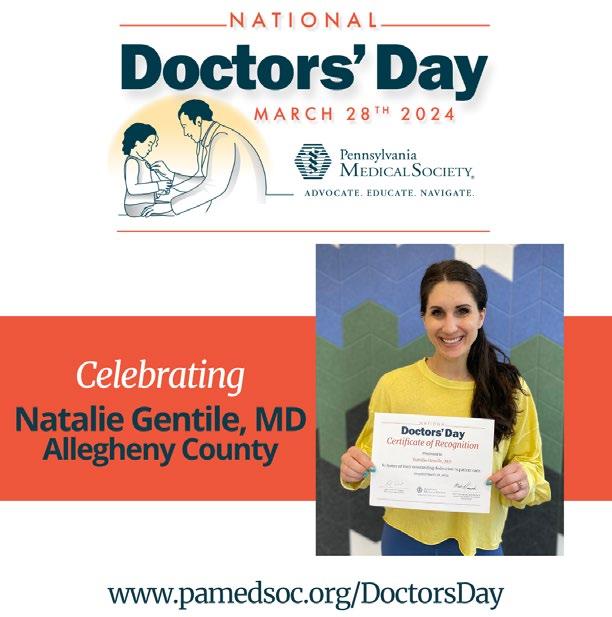
high level of caring and compassion for his patients. He takes the time to really get to know his patients and tries to understand their individual circumstances. He meets them where they are and collaborates with them to develop a plan for their good health. He takes care of multiple generations of family members and feels privileged to be a part of their lives. He absolutely loves his work!”
ACMS Vice President of Membership and Association Services, Nadine Popovich, and ACMS Board Member and PAMED Board of Trustees Member
Dr. G. Alan Yeasted visited Dr. Bruce Wright at his office at St. Clair Hospital. Dr. Wright’s nominator shared that: “He is the most dedicated, outstanding physician & leader with impeccable integrity, knowledge & ability to motivate colleagues & multidisciplinary treatment team. He is a tireless advocate for patient rights. One of the best physicians I have worked with in the past 37 years.”
ACMS Operations Coordinator, Melanie Mayer, visited Dr. Natalie Gentile at her office at Direct Care Physicians of Pittsburgh. Dr. Gentile
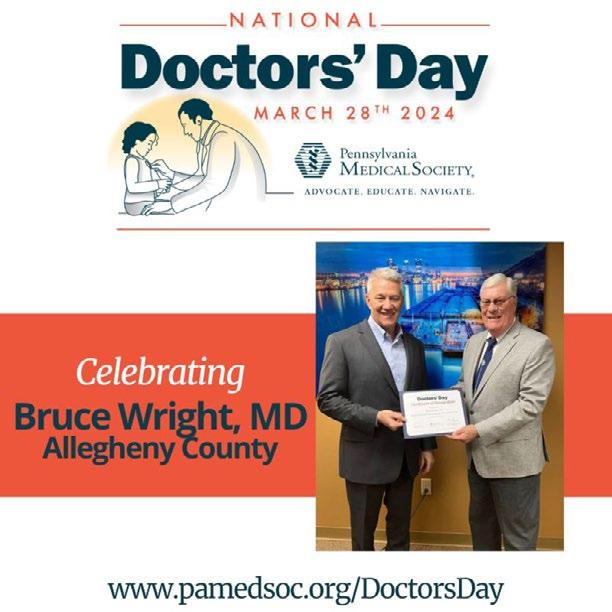

even invited Melanie to stay for one of her wellness classes following the presentation of her certificate. Dr. Gentile’s nominator shared: “Dr. Gentile goes above and beyond for her patients. She spends time with them, listens, and provides caring and compassionate healthcare. Within the past year, Dr. Gentile opened her new office location, which also houses her business, Rebel Wellness, a space that offers a teaching kitchen as well as fitness classes such as yoga and strength in a welcoming environment. Her combination of medicine with food + exercise as medicine is revolutionary in the Pittsburgh area.
In addition to these three physicians who received in-person acknowledgment, several ACMS members were also nominated for this recognition. Congratulations to Charles Mount, MD; David Lasorda, DO; Eric Griffin, DO; Jane Hughes, MD; Jody Leonardo, MD; Kathleen Osten, MD; Mark Woodburn, MD; Prerna Mewawalla, MD; Rachel Toney, MD; Ramzi Khalil, MD; Tad Scheri, MD for being nominated by your colleagues and patients for exceptional patient service.

ACMS Bulletin / April 2024 17
Society News
SMART at PAAR
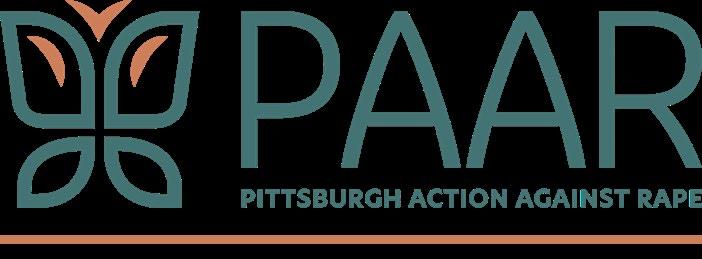 By: Kate Janicki, LPC CCTP - Director of Clinical Services; Melissa Moore, MS Ed, LPC, NCC - Supervisor of Child & Family Counseling Center
By: Kate Janicki, LPC CCTP - Director of Clinical Services; Melissa Moore, MS Ed, LPC, NCC - Supervisor of Child & Family Counseling Center
Ben, an eight-year-old boy in the 3rd grade, holds his mother’s hand as they enter the vestibule at Pittsburgh Action Against Rape (PAAR). It is Ben’s first appointment at PAAR, and he is feeling scared. His mother told him why he is at PAAR and he does not want to talk about it. His mother leads him into the lobby and as she is signing him in, Ben shyly looks around. He is surrounded by dozens of brightly colored flowers donated from Trader Joe’s. The receptionist escorts Ben and his mother to the elevator and travels to the second-floor child waiting room. There, Ben is surrounded by toys, coloring books, art supplies, and fidgeting toys. The receptionist offers Ben ice cream from Millie’s while he waits, but Ben buries his face in his mother’s side in fear. Several minutes later, Amanda, one of PAAR’s Child and Family Therapists, walks into the waiting room and calls
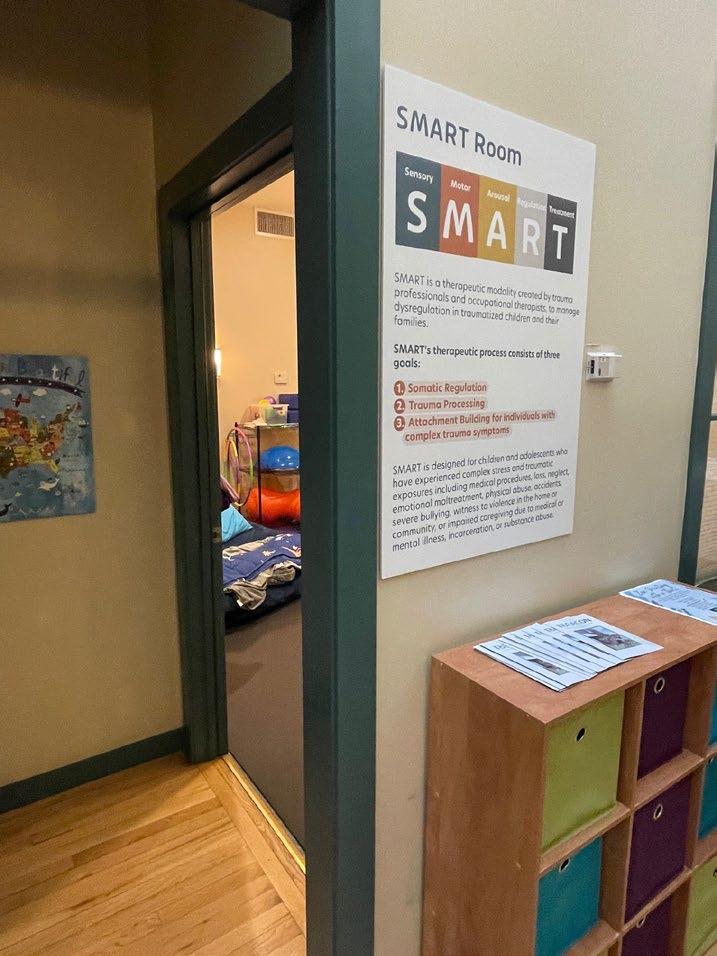
Ben’s name. Ben and his mother follow Amanda to her office. Amanda’s office is filled with the same kind of toys found in the waiting room, however, the office is small, and Ben feels he is too close to someone he does not know. Ben buries his face back in his mother’s side, while Amanda attempts to engage him in conversation. Amanda and Ben’s mother complete intake paperwork for the next 50 minutes, and Ben never says a word or makes eye contact. As soon as Ben and his mother leave PAAR and reach the car, Ben starts animatedly talking to his mother about all the flowers and toys he saw in PAAR.
Ben’s first appointment story is one experienced by hundreds of children affected by sexual trauma annually in Allegheny County. For the last 52 years, Pittsburgh Action Against Rape has provided essential no-cost services to survivors and secondary survivors of sexual assault, abuse, rape, sexual exploitation, and sex trafficking. PAAR services welcome people of all gender identities, ages, races, religions, incomes, languages, abilities, ethnicities, and sexual orientations.
Clinical services for children at PAAR are provided by the Child and Family Counseling Department, led by Clinical Supervisor, Melissa Moore, LPC. PAAR’s therapists are trained in and utilize evidence-based treatment modalities, such as Trauma-Focused Cognitive Behavioral Therapy (TFCBT), Eye Movement Desensitization and Reprocessing (EMDR), and Trauma Art Narrative Therapy (TANT) to process sexual trauma with child and adolescent survivors. TF-CBT, EMDR, and TANT all require the child survivor to engage in
verbalization to maintain model fidelity. Until recently, PAAR therapists spent countless sessions coaxing child survivors to verbally participate in trauma processing therapy. Cognizant that verbal trauma processing was not working for all children, Ms. Moore contacted Heather Finn, LICSW, a founding partner of SMARTmoves and co-author of, “Transforming Trauma in Children and Adolescents: An Embodied Approach to Somatic Regulation, Trauma Processing and Attaching-Building”, to provide training to the PAAR clinical team. In 2023, Ms. Finn provided PAAR’s entire clinical team with a five-week training in Sensory Motor Arousal Regulation Treatment, otherwise known as SMART. SMART is a therapeutic modality created by trauma professionals and occupational therapists, to manage dysregulation in traumatized children and their families (Warner, Westcott, Cook, & Finn 2020). SMART’s therapeutic process consists of three goals: Somatic Regulation, Trauma Processing, and Attachment Building for individuals with complex trauma symptoms. Complex trauma symptoms include affective and somatic dysregulation, behavioral and attentional dysregulation, and dysregulation of self and relationships. SMART uses a “bottom up”* framework, focusing on movement and sensation, to support emotional and behavioral regulation. SMART utilizes various sensory inputs (vestibular, proprioceptive, and tactile) to assist in regulation of the child’s traumatized states and move toward an integrated state, where their trauma can be reprocessed, and healthy boundaries and attachments can be established. This means that the survivor
18 www.acms.org
Opinion
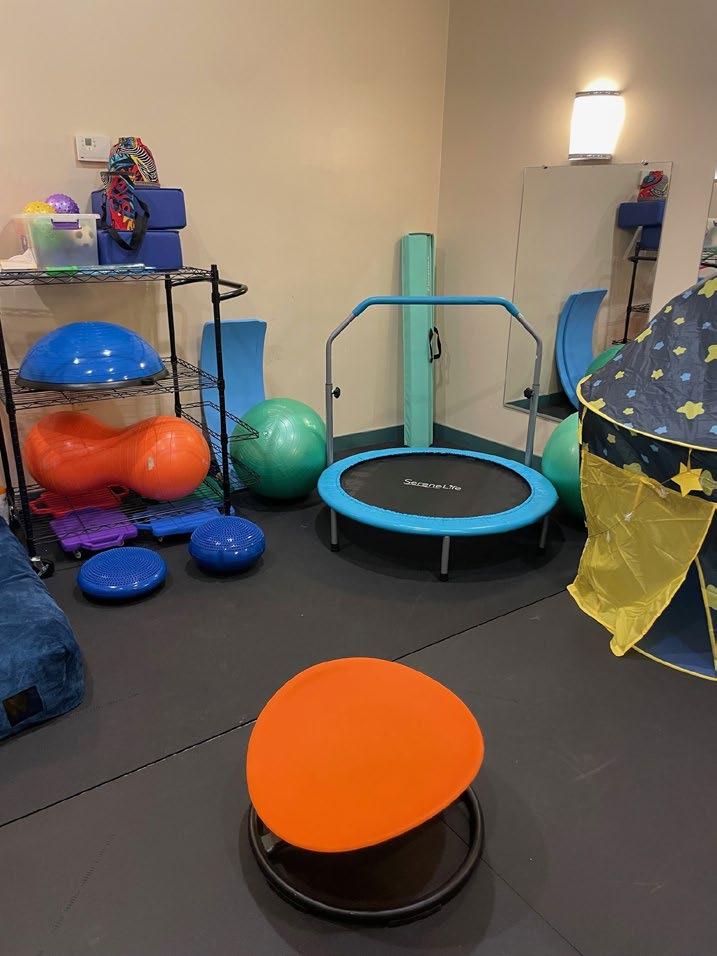
does not have to cognitively understand the intervention to decrease symptoms of complex trauma. SMART does not depend on language to create positive change, therefore, the child does not have to verbally disclose a trauma, to benefit from treatment (Warner, Westcott, Cook, & Finn 2020).
SMART interventions complement the other practiced treatment modalities of EMDR, TF CBT, and TANT. The SMART modality can be used in the EMDR Resource Development and Installation phase, as bilateral stimulation can be achieved using the SMART room equipment, such as a swing. The SMART modality can also be used in the Self-Management Training phase of EMDR, as the interventions used in SMART can be used for the self-management of anxiety symptoms. SMART interventions can be used during many stages of TF CBT, including Psychoeducation and Parenting Skills, Relaxation, Affect Modulation, Conjoint Caregiver/ Child Sessions, and Enhancing Safety and Social Skills. Most importantly, SMART specifically facilitates attachment between the child and caregiver by engaging caregivers in the treatment session. The attachment building and repair sessions are focused on establishing a secure attachment between client and caregiver. This is accom-
plished by using movement-based SMART interventions to establish co-regulation between the child and caregiver, while building connected safety and attunement (Warner, Westcott, Cook, & Finn 2020).
Now that PAAR clinicians are trained and receiving monthly consultation from SMART experts, Ben’s narrative has changed. When the therapist Amanda walks into the child waiting room, she notices that Ben has his face hidden in his mother’s side. Seeing that Ben needs tactile input, Amanda leads Ben and his mother to the SMART room. Amanda introduces Ben to a glow-in-
the-dark tent, filled with soft stuffed animals and brightly colored balls. Ben crawls into the tent and presses his face into the stuffed animals. While Ben hides in the tent, Amanda completes the intake paperwork with Ben’s mother. Then, Amanda attempts to engage Ben in conversation from the outside of the tent. Amanda asks, “Ben, what is your favorite color”? Keeping his face mostly pressed in the stuffed animal, protected by the glowing walls of the tent, Ben throws an orange ball out of the tent.
Please visit paar.net to learn more.

ACMS Bulletin / April 2024 19
Opinion
Sparsentan (FilspariTM)
By: Alexa Wardoclip, PharmD; Madison Abbs, PharmD, BCPS
Background
Sparsentan (FilspariTM) is an endothelin and angiotensin II receptor antagonist that received accelerated FDA approval status in February 2023.1 Sparsentan is indicated for reduction of proteinuria in adults with primary immunoglobulin A nephropathy (IgAN) that are at risk of rapid disease progression. This medication exerts its effects by antagonizing endothelin type A receptors and angiotensin II type 1 receptors which are thought to contribute to the pathogenesis of IgAN. It works to antagonize both endothelin type A receptor (ETAR) and the angiotensin II type 1 receptor (AT1R). The level of ET-1 is increased in CKD and its effect on renal infarct is primarily exerted via its action on ETAR. Antagonism of ETAR has been shown to impact renal blood flow and reduce proteinuria in patients with CKD.
IgAN is the most common primary glomerulonephritis with a high prevalence of 10-30% in western countries and an even higher prevalence of 40-50% in Asia. IgAn is an autoimmune disease characterized by kidney deposition of immunoglobulin A (IgA)-containing immune complexes.2 IgAN is often described using the “multi-hit hypothesis,” which explains that pathogenesis of this disease occurs through immune complexes that are formed due to an interaction between polymeric IgA, which is recognized as an autoantigen. Autoantibodies are induced due to the presence of this polymeric IgA which deposit in mesangial cells and result in glomerular injury with 24-26% of patients progressing to end-stage renal
disease (ESRD) within 10 years. The RAAS system is extremely important in kidney disease as renin induces the conversion of angiotensinogen to angiotensin I and then angiotensinconverting enzyme (ACE) converts this to angiotensin II. Angiotensin II then causes vasoconstriction and stimulates aldosterone synthesis in the adrenal cortex which then leads to sodium and water reabsorption and fibrosis. When angiotensin II is both directly or indirectly blocked, intraglomerular pressure and proteinuria are reduced, which reduces the risk of kidney disease progression. An indicator of rapid disease progression is defined as a urine protein-to-creatinine ratio (UPCR) ≥ 1.5 g/g. Sparsentan has been studied in patients with focal segmental glomerulosclerosis (FSGS) and is currently in the phase III period of investigation for this indication.
Sparsentan is a first-in-class medication that reduces proteinuria in IgAN and with promising preliminary results in FSGS.3 This medication serves as a new option for patients with IgAN who are otherwise at high risk of renal function decline and development of ESRD resulting from a disease with few therapeutic options.
Safety
Sparsentan is only available through the Sparsentan REMS program due to its risks for hepatotoxicity and embryo-fetal toxicity.1 Pregnancy testing is required before, monthly during, and after treatment is complete. Liver function testing is also required prior to starting treatment, ALT and AST monthly for 12 months, then every 3 months during treatment.
Sparsentan is contraindicated with angiotensin receptor blockers (ARBs), angiotensin-converting enzyme inhibitors (ACEs), endothelin receptor antagonists (ERAs), and aliskiren. Specific dose adjustments are not recommended in kidney impairment; however, consideration should be given to withhold or discontinue this medication in patients who develop a significant decrease in kidney function. In patients with preexisting hepatic impairment, use of sparsentan should be avoided due to the potential risk of serious hepatic injury. In patients taking sparsentan, if ALT or AST > 4 times and ≤ 8 times ULN, this elevation should be confirmed with a repeat measure. If confirmed, treatment should be interrupted and LFTs should be monitored weekly. Consideration can be given to reinitiate therapy at 200 mg once daily with reassessment of hepatic function in 3 days. It is not recommended to reinitiate therapy if patient has experienced clinical symptoms of hepatotoxicity or ALT or AST > 3 times ULN and total bilirubin > 2 times ULN or INR > 1.5, ALT or AST > 3 times ULN with symptoms of fatigue, nausea, vomiting, right upper quadrant pain/tenderness, fever, rash, and/or eosinophilia (> 5% eosinophils), ALT or AST > 5 times ULN for > 2 weeks. If ALT or AST > 8 times ULN, it is recommended to permanently discontinue treatment if no other cause for elevation is identified.
Tolerability
Sparsentan was overall welltolerated by patients with adverse reactions only being reported in about 2% of patients.1 Common
20 www.acms.org Materia Medica
adverse effects include hypotension, hyperkalemia, peripheral edema, diarrhea, and elevations in AST or ALT, which were increased in the sparsentan arm compared to the irbesartan arm.3 Serious adverse events occurred with similar incidence in both treatment groups with most common being AKI and ALT or AST elevations. One patient discontinued treatment due to AST/ALT elevations in the irbesartan arm.
Efficacy
The effect of sparsentan on proteinuria was assessed in a randomized, double-blind, activecontrolled, multicenter, global study (PROTECT) in adults with biopsy-proven IgAN, eGFR ≥ 30 mL/min/1.73 m2, and total urine protein ≥ 1.0 g/day on a maximized stable dose of RAS inhibitor that was at least 50% of maximum labeled dose.3 On randomization, the patient’s previous RAS blockade was discontinued with no washout period and they were started on either sparsentan 200 mg daily or irbesartan 150 mg daily. At 36 weeks, sparsentan was proven superior in proteinuria reduction beyond maximally tolerated RAS inhibitor therapy compared to irbesartan. Following prior maximally tolerated RAAS inhibition, sparsentan delivered an additional 45% reduction in proteinuria from baseline. Secondary outcomes showed statistically significant complete (< 0.3 g/d) and partial (< 1.0 g/d) proteinuria remission, in the sparsentan group compared to the irbesartan group.
Price
Sparsentan is priced per tablet (200 mg or 400 mg) which is given once daily. One tablet of either 200 mg or 400 mg costs $396, making the total monthly cost of this medication $11,880. Travere Therapeutics offers copay assistance for patients with commercial insurance. However, this program is not valid for patients insured by a federal or state government-funded health plan (including Medicare, Medicare Advantage, Medicaid, and TRICARE) or any uninsured patient. Irbesartan costs ~$0.44-$3.69 per tablet depending
on tablet strength, making the total monthly cost of this medication about $13.20-$110.70 which is much less than sparsentan while also being a once daily medication.
Simplicity
Sparsentan is a once daily medication starting at 200 mg once daily and can be titrated to the recommended dose of 400 mg once daily after 14 days.1 This medication should be taken with water prior to the morning or evening meal. Despite a simple daily regimen, monitoring for sparsentan is relatively extensive, with frequent liver enzyme levels. Sparsentan also interacts with CYP3A inhibitors such as amiodarone, fluconazole, verapamil, and nifedipine and these medications should not be concomitantly administered.
Bottom Line
Immunoglobulin
A nephropathy is an autoimmune disease that causes renal injury and progression to ESRD in a large number of patients. As a result of this disease and renal injury, patients develop proteinuria which is an indicator of renal function decline.2 Sparsentan is a first-in-class medication FDA-approved to reduce proteinuria in IgAN and with promising preliminary results in FSGS. Sparsentan has been studied in direct comparison to irbesartan, a medication currently being used for proteinuric chronic kidney disease. When compared with irbesartan, sparsentan was proven superior in proteinuria reduction and delivered an additional 45% reduction in proteinuria from baseline.3 Sparsentan is a once daily medication which allows for ease of administration; however, this medication is newly approved, requires extensive monitoring, and is expensive. Due to the limited treatment options currently available, sparsentan may be a good option for patients who are no longer benefiting from other treatments. Prior to utilizing this medication, it is important to consider contraindications including pregnancy or severe hepatic dysfunction. Overall, sparsentan should be considered as a
relatively safe, effective, and tolerable option for the treatment of IgAN.
References:
1. Fishawack. (n.d.). Filspari. FILSPARI. https://filsparihcp.com/igan/
2. Du, Y., Cheng, T., Liu, C., Zhu, T., Guo, C., Li, S., Rao, X., & Li, J. (2023). Iga nephropathy: Current understanding and perspectives on pathogenesis and targeted treatment. Diagnostics, 13(2), 303. https://doi.org/10.3390/ diagnostics13020303
3. Chiu, A. W., & Bredenkamp, N. (2023). Sparsentan: A first-in-class dual endothelin and angiotensin II receptor antagonist. Annals of Pharmacotherapy. https://doi. org/10.1177/10600280231198925
At the time of authorship Alexa Wardoclip, PharmD is a PGY-1 Pharmacy Resident at UPMC St Margaret and can be reached at wardoclipam@upmc.edu. Madison Abbs, PharmD, BCPS is a PGY-2 Ambulatory Care Pharmacy Resident at UPMC St Margaret and can be reached at abbsmc@upmc.edu. Heather Sakely, PharmD, BCPS, BCGP provided editing and mentoring for this article and can be reached at sakelyh@upmc.edu.
ACMS Bulletin / April 2024 21
Specialty Group Updates
April 2024
By: Nadine Popovich, Eileen Taylor and Melanie Mayer
Allegheny County Immunization Coalition (ACIC) — 2024 ChairAshley Ayers, MBA, BS, CIC: Attention physicians and healthcare advocates! We're thrilled to announce the inaugural Allegheny County Immunization Coalition (ACIC) Happy Hour, "Protect & Connect," taking place on May 10th from 4 pm to 6 pm at Kingfly Spirits, located at 2613 Smallman Street, Pittsburgh, PA 15222. Join us for an evening filled with networking opportunities, updates on ACIC's immunization initiatives, and collaborative discussions on community outreach efforts. This event offers the chance to connect with fellow healthcare professionals, educators, vaccine champions, and students who share a passion for promoting vaccination awareness. Plus, enjoy two complimentary drink tickets and appetizers during our happy hour. Whether you're an ACIC member or simply interested in learning more about our coalition, all are welcome to attend. Admission is free, but we kindly request that you RSVP to ensure an accurate headcount. Visit the upcoming events page on the ACMS website to find the registration page for this event. Don't miss out on this opportunity to unite in our mission to protect public health through immunization advocacy!
American College of Surgeons
Southwestern Pennsylvania Chapter (ACS-SWPA) — 2024 President – Richard Fortunato, DO, FACS: On Wednesday, March 27th, the Southwestern Pennsylvania Chapter of the American College of Surgeons (ACS-SWPA) convened at Eddie Merlots for their second annual Debates and
Dilemmas competition and dinner. Over 50 medical students, residents, ACS-SWPA members, and their guests attended this year's event, gathering to network, socialize, and participate in a debate-style competition. Regional faculty and residents engaged in discussions about contemporary surgical dilemmas, fostering an atmosphere of intellectual exchange and collaboration. Visit https://acsswpa.org/ to find out who took home this year’s Debates & Dilemma trophy!
Pennsylvania Geriatric Society Western Division (PAGS-WD) — 2024 President - Heather Sakely, PharmD, BCPS, BCGP: The PAGS-WD is hosting the 32nd Annual Virtual Clinical Update in Geriatric Medicine on April 25-26, 2024. The goal of this conference is to help provide superb care to older adults by ensuring that each session provides evidence-based “pearls” that you can immediately incorporate into your practice. Conference registration is open through April 22. The society will be also announcing this year’s David C. Martin Award winners at the conference. Please visit www.pagswd. org for other society news and updates. accepting nominations for the 2024 season. Please visit www.pagswd.org for other society news and updates.
The Pittsburgh Ophthalmology Society (POS) — 2024 PresidentPamela P. Rath, MD: Annual Meeting and Banquet Highlights: The 59th Annual Meeting of the Pittsburgh Ophthalmology Society (POS), orchestrated under the guidance of Dr. Pamela P. Rath, took place alongside
the 44th Annual Meeting for Ophthalmic Personnel on March 8th. Held at the Omni William Penn hotel, the event drew over 85 physicians, 140 ophthalmic personnel, and 34 exhibitors, fostering a conducive environment for learning and collaboration.
The highlight of the event was the 43rd annual Harvey E. Thorpe Lecture, delivered by Dr. Daniel F. Martin, MD, Chair of the Cole Eye Institute at Cleveland Clinic. Accompanied by esteemed guest faculty including Dr. Jane C. Edmond (Austin, TX), Dr. Mark A. Rolain (Sterling Heights, MI), and Dr. Joshua Stein (Ann Arbor, MI), the program featured insightful lectures that captivated attendees. Their expertise and willingness to share insights contributed to the overall success of the event, as echoed by positive feedback from participants.
Dr. Martin's lectures, in particular, resonated with the audience, showcasing his profound knowledge and expertise in the field. Attendees lauded all speakers for their excellence in content delivery and engagement.

22 www.acms.org Society News
The POS extends heartfelt gratitude to all industry representatives who sponsored or exhibited at the event. Their invaluable support enables us to maintain minimal registration costs for both the annual program and the ophthalmic personnel program.

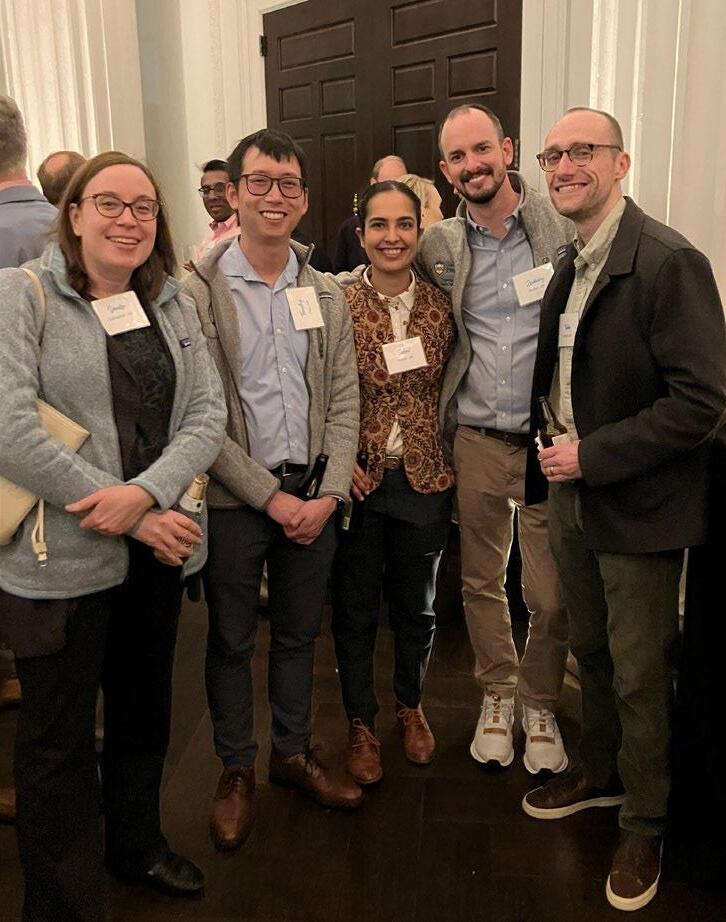
program was the eagerly awaited return of Ophthalmic Jeopardy, a perennial favorite among attendees. Contestants engaged in a lively session of questionanswering, with winners walking away with a $10 Starbucks Gift Card.
Distinguished guest faculty, including Dr. Mark Rolain representing the Ophthalmic Mutual Insurance Company (OMIC), enriched the event with their insights. Dr. Rolain's presentation on risk management provided invaluable insights into the potential pitfalls of safety protocols and office systems, underscoring the critical importance of mitigating risks to prevent patient harm, including vision loss.
Annual Banquet: The annual banquet, held on Thursday, March 7th, marked a delightful prelude to the Annual Meeting. Hosted in the sophisticated Sofia Room at the Hotel Monaco, the event welcomed over 60 attendees and their guests to an evening of conviviality and networking. The elegant yet relaxed ambiance provided the perfect backdrop for fostering fellowship and camaraderie among guests.
Distinguished guest faculty members added to the allure of the evening, engaging in lively conversations and forging connections with attendees and members of the Society.
As the evening drew to a close, President Pamela P. Rath, MD, expressed her gratitude to the POS Board for their diligent efforts in curating an exceptional lineup of faculty for the Annual Meeting. She also extended appreciation to the Ophthalmic Personnel course directors, Dr. Avni Vyas, Dr. Cari Lyle, and Dr.
Jeffrey Wincko, for their outstanding work in orchestrating a stellar program tailored to the needs of staff members.
44th Annual Ophthalmic Personnel Meeting – Highlights: During the 59th Annual Meeting of the Pittsburgh Ophthalmology Society (POS), the 44th Annual Meeting for Ophthalmic Personnel ran concurrently, drawing 140 attendees consisting of ophthalmic technicians, assistants, coders, photographers, and front staff. This comprehensive full-day program is tailored specifically for ophthalmic personnel, aimed at augmenting the quality, expertise, and safety of ophthalmic patient care.
The agenda comprised a blend of plenary and breakout sessions, all accredited for 1.0 IJCAHPO credit. In the afternoon, participants had the flexibility to curate their own agenda, selecting from a variety of front- and back-office courses.
Heartfelt appreciation is extended to all speakers, many of whom are esteemed members of the Pittsburgh Ophthalmology Society, for generously sharing their time and expertise in delivering lectures.
A notable highlight of this year's
The presence of Jane Shuman was truly enriching for the course. With over 30 years of industry experience, Jane is nationally renowned as an authority in patient flow, practice efficiencies, and technician training.
Prior to the commencement of general lectures, representatives from various not-for-profit vision resource organizations took the stage to share insights into their products and services. This initiative underscores the course directors' commitment to spotlighting these organizations, enabling staff to gain a deeper understanding of the resources available for patients.
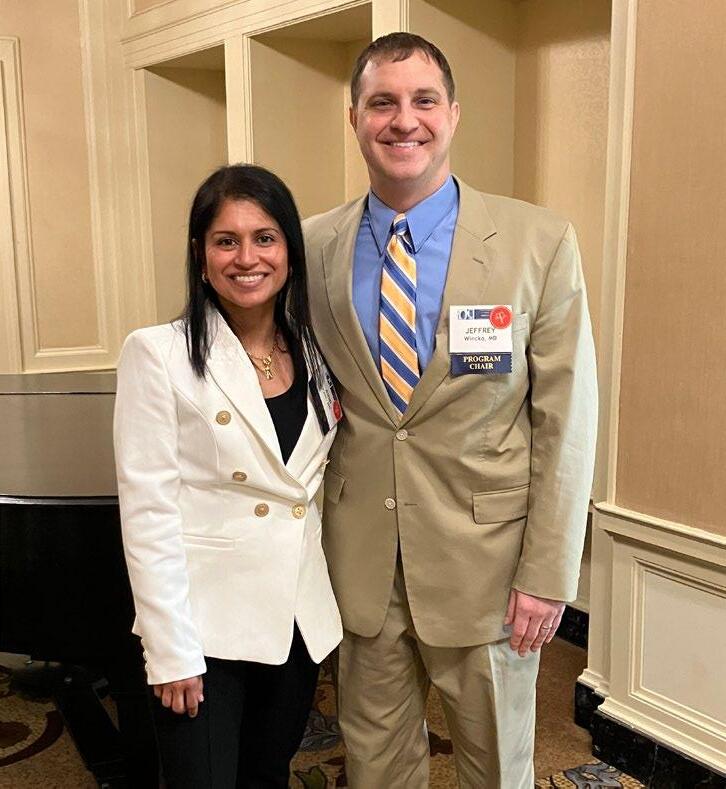
ACMS Bulletin / April 2024 23
Pamela P. Rath, MD, President; Daniel Martin, MD 43rd annual Harvey Thorpe Lecture; Jane C. Edmond, MD and Joshua D. Stein, MD, MS, Guest Presenters.
Denise Gallagher, MD, Timothy Chen, MD, Saloni Kapoor, MD, Zach Nadler, MD and Tadhg Schempf, MD
Allied Course Directors: Avni Vyas, MD and Jeffrey Wincko, MD
























































 By: Kate Janicki, LPC CCTP - Director of Clinical Services; Melissa Moore, MS Ed, LPC, NCC - Supervisor of Child & Family Counseling Center
By: Kate Janicki, LPC CCTP - Director of Clinical Services; Melissa Moore, MS Ed, LPC, NCC - Supervisor of Child & Family Counseling Center







